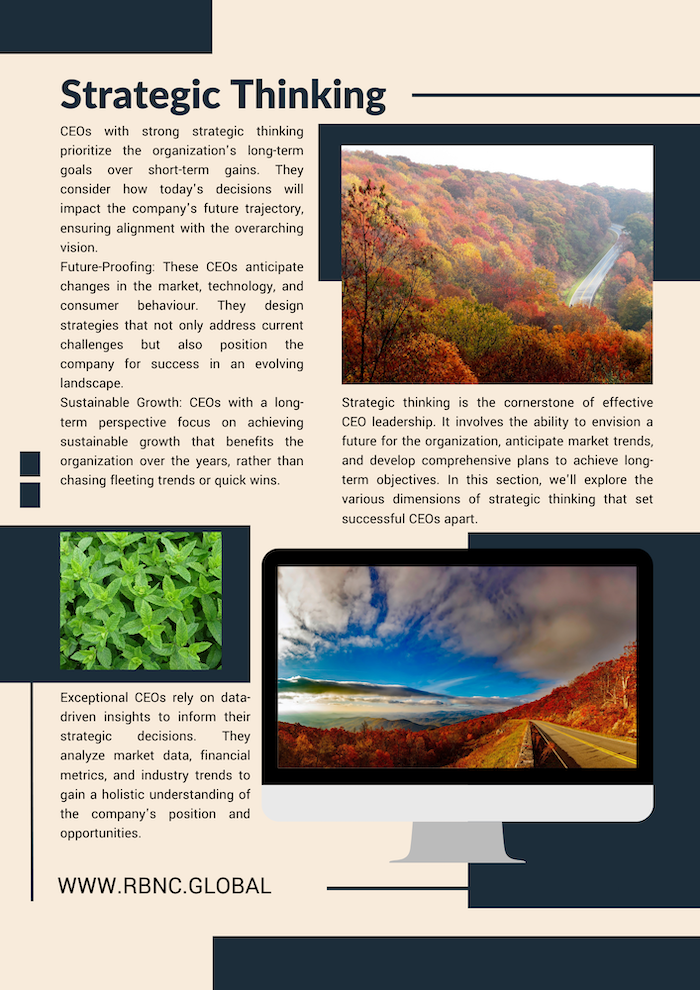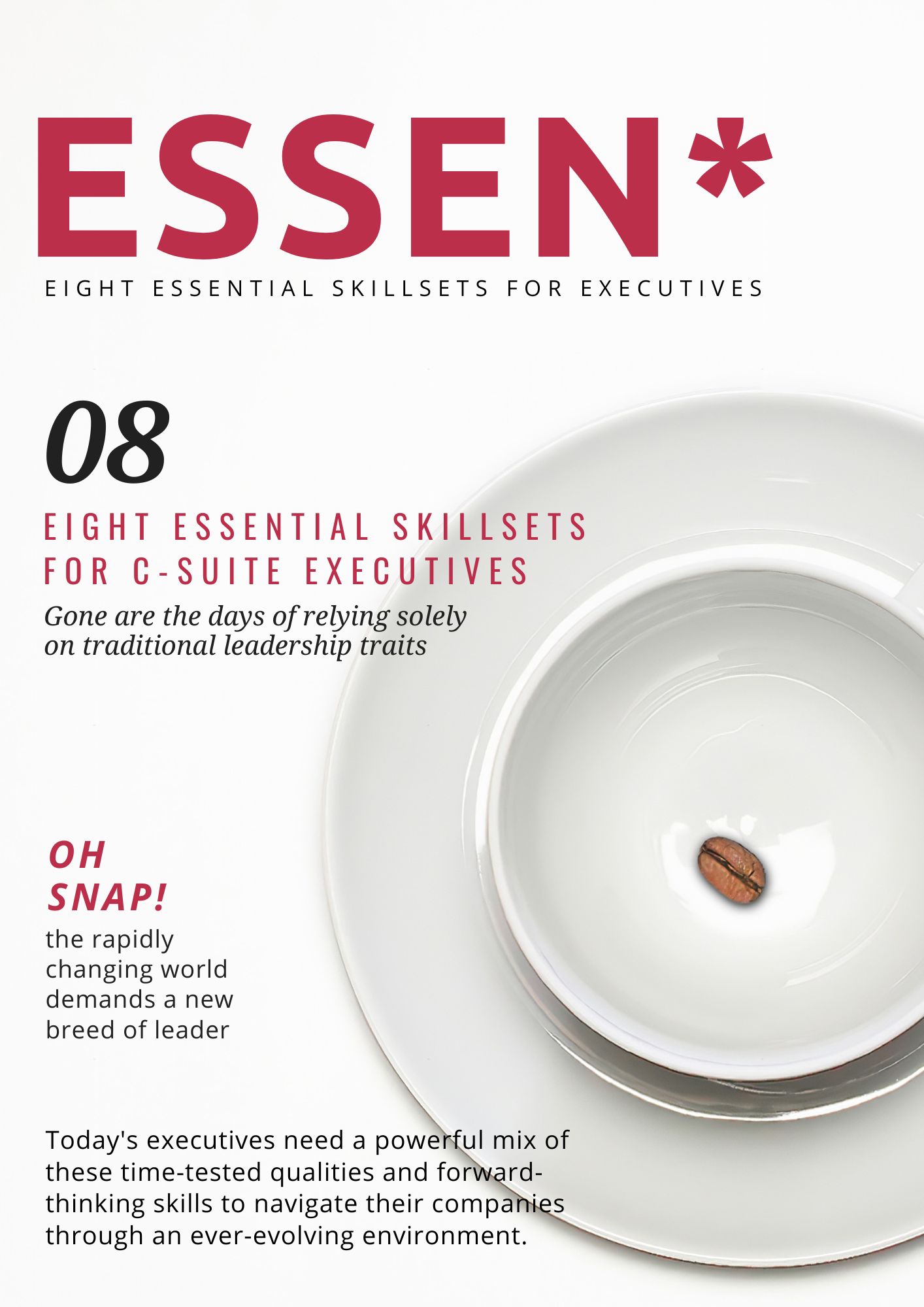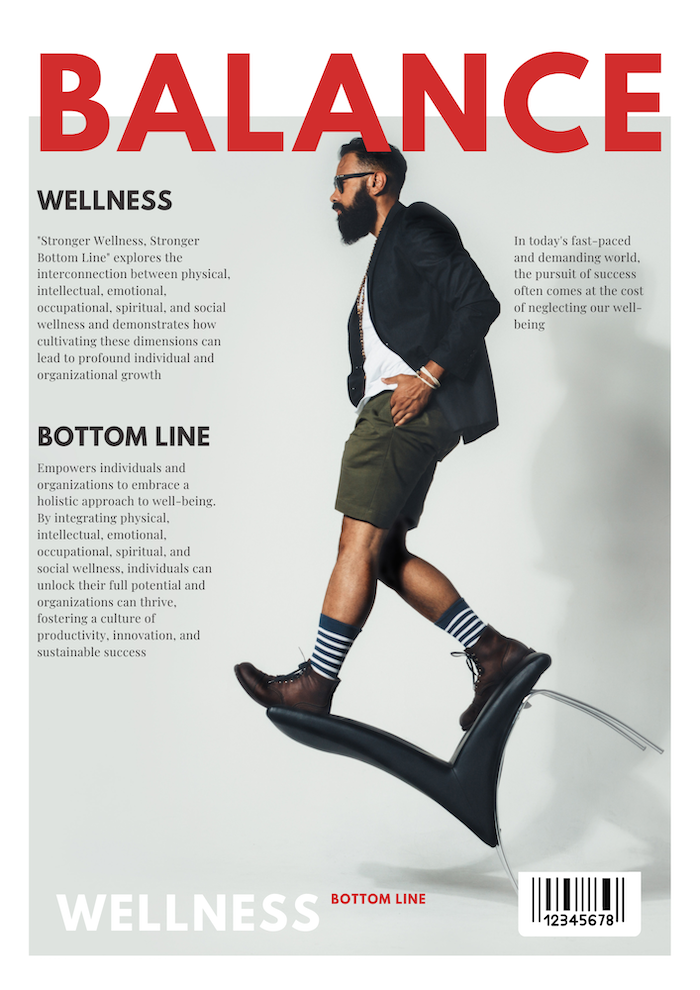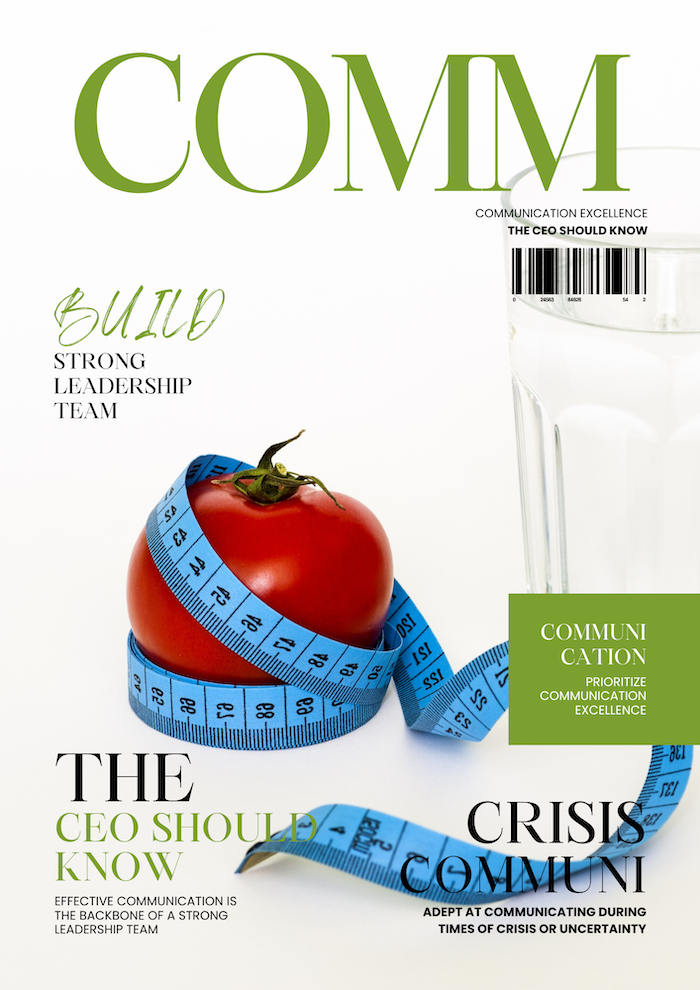Strategic Thinking - The CEO Skills
Strategic thinking is the cornerstone of effective CEO leadership. It involves the ability to envision a future for the organization, anticipate market trends, and develop comprehensive plans to achieve long-term objectives. In this section, we'll explore the various dimensions of strategic thinking that set successful CEOs apart.
Long-Term Perspective:
CEOs with strong strategic thinking prioritize the organization's long-term goals over short-term gains. They consider how today's decisions will impact the company's future trajectory, ensuring alignment with the overarching vision.
- Future-Proofing: These CEOs anticipate changes in the market, technology, and consumer behaviour. They design strategies that not only address current challenges but also position the company for success in an evolving landscape.
- Sustainable Growth: CEOs with a long-term perspective focus on achieving sustainable growth that benefits the organization over the years, rather than chasing fleeting trends or quick wins.
Analytical Mindset:
Exceptional CEOs rely on data-driven insights to inform their strategic decisions. They analyze market data, financial metrics, and industry trends to gain a holistic understanding of the company's position and opportunities.
- Data Interpretation: CEOs proficient in strategic thinking decipher complex data to extract meaningful patterns and actionable insights. They use these insights to make informed choices.
- Risk Assessment: These CEOs assess risks and rewards associated with different strategies. They use data to evaluate the potential impact of various options, helping them make calculated decisions.
Risk Management:
Strategic thinkers are adept at identifying potential risks and developing plans to mitigate them. They anticipate challenges that could impact the organization's growth and implement measures to ensure resilience.
- Contingency Planning: CEOs proficient in strategic thinking create contingency plans for various scenarios, preparing the organization to respond effectively to unexpected challenges.
- Adaptation to Uncertainty: These CEOs understand that risk is inherent in business. They are prepared to pivot their strategies based on changing circumstances while minimizing negative impacts.
Innovation and Adaptation:
CEOs who excel in strategic thinking foster a culture of innovation within their organizations. They encourage creative thinking and embrace change as a catalyst for growth.
- Embracing Disruption: These CEOs understand that market disruptions can lead to new opportunities. They are open to exploring innovative approaches and technologies that can reshape the industry.
- Continuous Improvement: CEOs with strategic thinking skills view strategies as dynamic, not static. They consistently refine and improve their approaches based on feedback and results.
Conclusion:
Strategic thinking is the compass that guides CEOs through the complexities of leadership. The ability to take a long-term perspective, analyze data, manage risks, foster innovation, and adapt to change distinguishes exceptional CEOs. By developing and honing these strategic thinking skills, CEOs can anticipate shifts in the business landscape, position their organizations for success, and lead with confidence in an ever-evolving environment.
Back to: Chapter 2: Essential Skills and Qualities of a CEO









